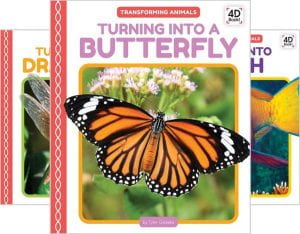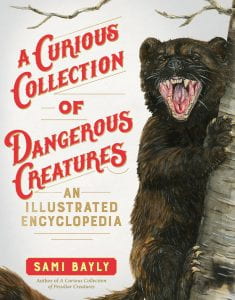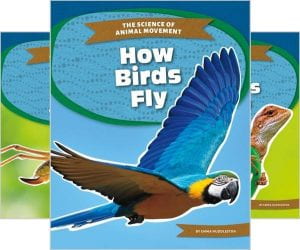 Ruby, Rex. Amazing Animal Self-Defense. Bearport, 2023. $19.95 ea. $119.70 set of 6. 24 p. Grades 1-4.
Ruby, Rex. Amazing Animal Self-Defense. Bearport, 2023. $19.95 ea. $119.70 set of 6. 24 p. Grades 1-4.
Bloody Eyes. 979-8-885-09385-9.
Bubbling Drool. 979-8-885-09386-6.
Deadly Quills. 979-8-885-09387-3.
Eye-Watering Stink. 979-8-885-09388-0.
Gooey Slime. 979-8-885-09390-3.
Oozing Toxins. 979-8-885-09389-7.
The many unique defenses deployed by animals against predators are the subject of the new series Amazing Animals Self-Defense. This reviewer had the opportunity to examine the volume Gooey Slime: Gross Hagfish. Hagfish (also known as slime eels) are sea creatures that live mostly on the bottom of the ocean. Their predators include much larger animals such as sharks and seals. When one of these predators attempts to attack the hagfish, the hagfish shoots a gooey slime at the predator! The slime can clog gills, so many potential predators steer clear of the hagfish. Readers also will learn key information about the animal featured in each volume including habitat, diet, life cycle, and more. Numerous photos, including close up views of the self defense mechanism of the animal, are featured throughout the text. Each volume includes a glossary and a link to find additional resources online.
THOUGHTS: An animal that shoots slime at its predators?!? Say no more – this is certainly a topic that is sure to grab the attention of readers (As will the other self-defense mechanisms featured within the series)! A great choice for research or recreational reading, this series merits consideration for elementary libraries looking to expand their animal offerings.
590s Animals






